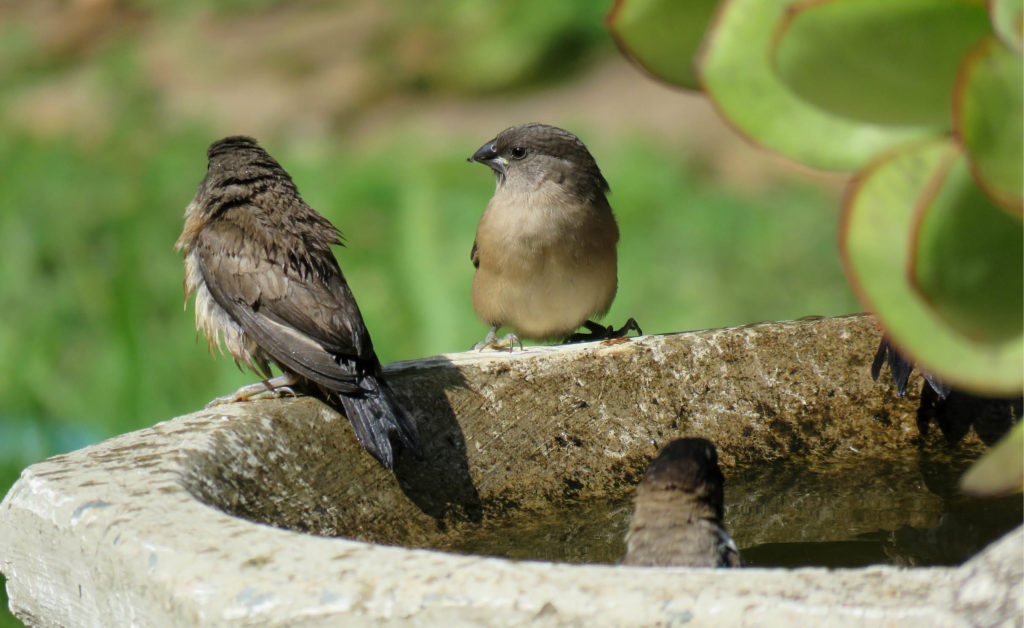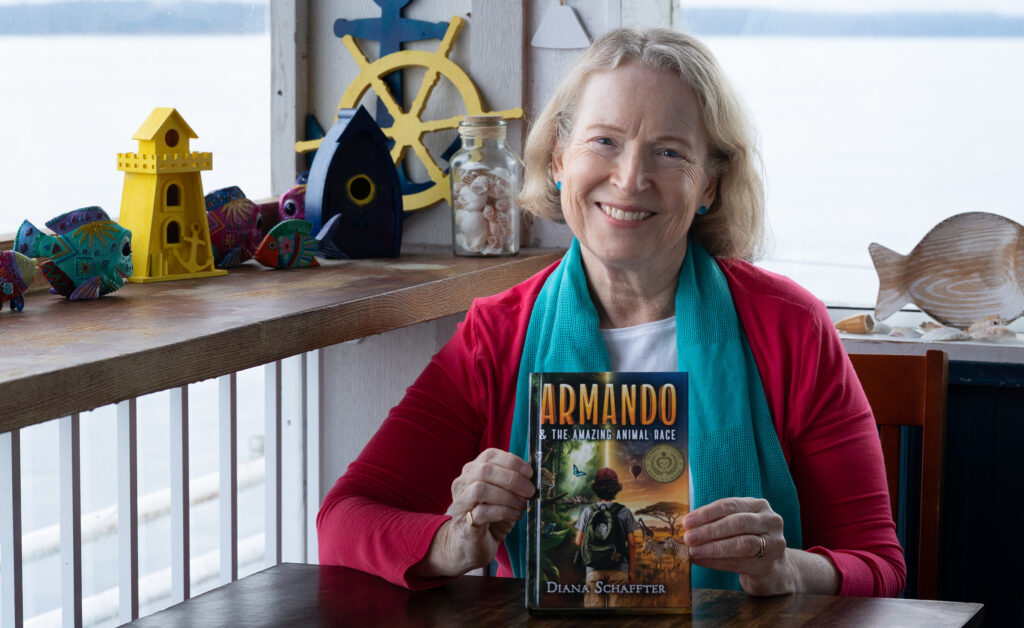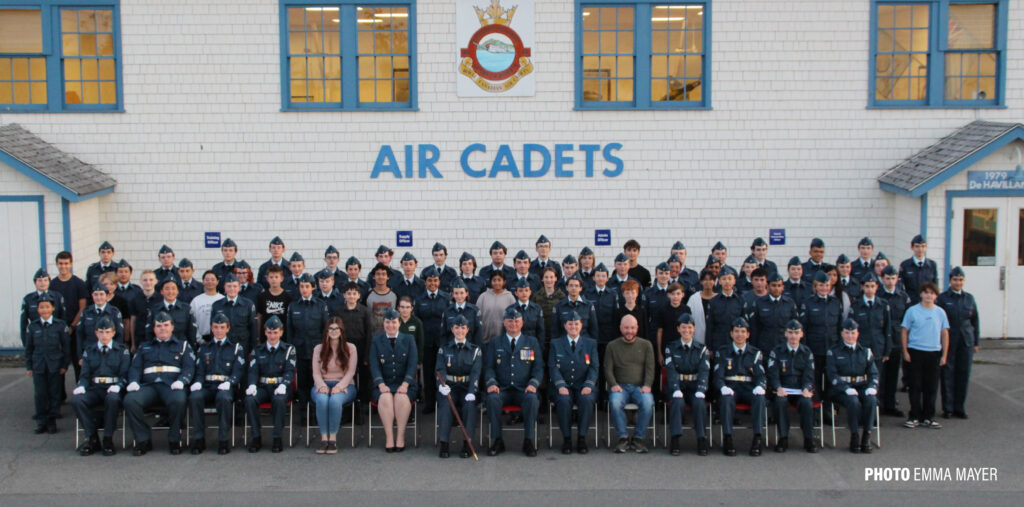by Katie Kroeker, Pacific Ridge Landscapes –
Lately several clients have asked us to design bird gardens, so I thought I’d share some practical pointers on how to make your own garden more bird friendly.
The next time you’re in your garden, take a look around to discover if it has what it takes to become an avian hot spot.
Evergreen trees or shrubs. Birds need safe places to nest and to provide cover during inclement weather. Evergreens are their preferred choice. Conifers (cedars, pine, firs) are very important nesting options for birds, and dense broadleaf evergreens like hawthorn and ceanothus are also known nesting trees. In my backyard, our seating area is tucked under a hawthorn tree, and last summer a pair of robins built their nest in the branches just above our heads. It was so fun to watch them build their nest and feed the babies!
Plant Layers. Layers of vegetation are very important in order to provide food and cover. In particular, native plants are easily recognized by birds and will encourage them to visit. Planting low, medium and tall shrubs and perennials in a tiered effect will attract a variety of birds to your yard. Ground covers, colourful perennials, shrubs and trees that produce berries will bring birds to your garden all year.
Different birds nest at different heights – some in trees and some on the ground – and a variety of plant sizes and types will mean more bird species in your yard. The more cover you have, the more nesting birds you will attract. Birds will also use fallen leaves, twigs and plant debris to build their nests, so if your garden is too tidy, birds will be forced to go elsewhere to build their nests.
Food. In addition to bird feeders, there are all kinds of ways to keep your neighbourhood and visiting birds well fed. If you stagger the timing of berry and seed production throughout the year, you will attract a wider variety of both native and migrant bird species.
Oregon grape, hawthorn, viburnum, wild rose, holly, ash, honeysuckle, sunflower, ivy, cotoneaster, beauty berry and serviceberry will all attract and feed birds over the winter. The rest of the year, plants such as coneflower, aster, camellia, cherry, mahonia, fuchsia, monarda, cosmos, penstemon, salvia, yarrow attract and feed all manner of bird species. Don’t forget that birds like to eat bugs too!
Water. Birds are attracted to the sound of moving water and the difference it makes to the quantity and variety of birds should not be underestimated. A bird bath is a good start, and if you can add a pump to create the sound of water or scale up to a natural looking water feature, you’d be amazed at who arrives. I have a small, shallow ceramic pot that I’ve filled with stones and water, then added a pump and ever since, our yard is visited by all kinds of cute little birds. Clients of ours have even come outside to find ducks in their water feature instead of in their natural pond! Now that patio season is upon us, I’m looking forward to my own back yard nature channel. Maybe I’ll even have time to brush up on my avian ID skills!




